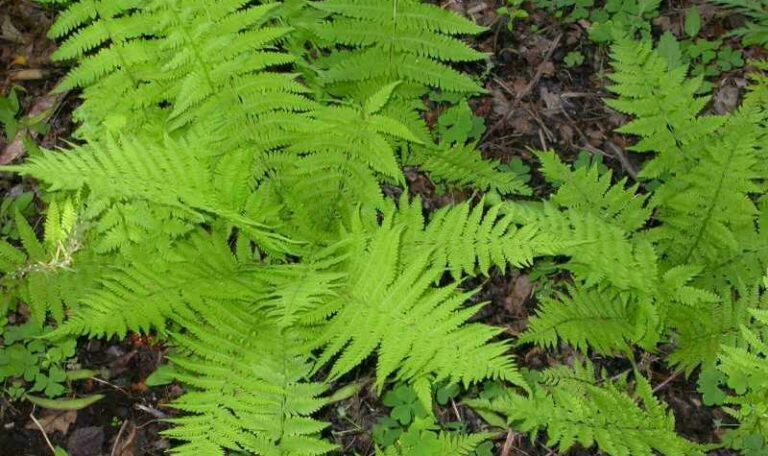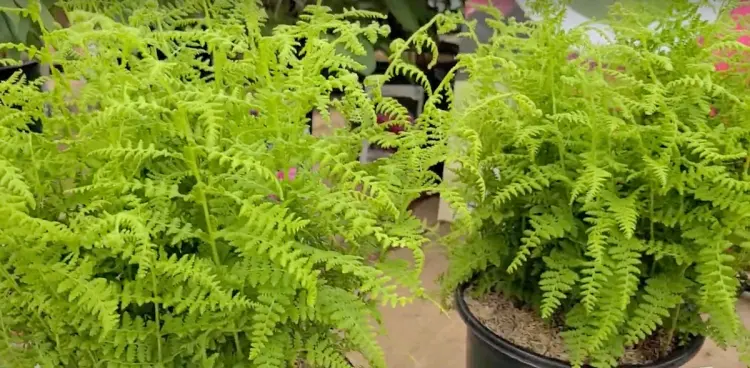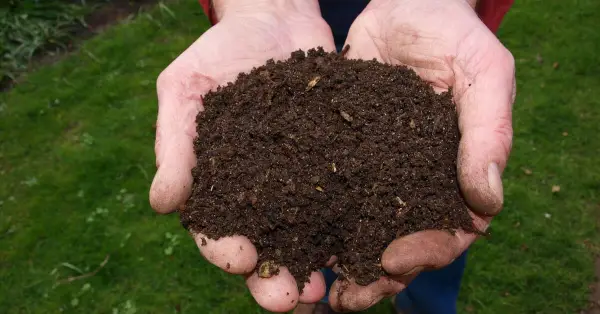Introduction to Hay-Scented Fern
Botanical Overview
Hay-scented fern, scientifically known as Dennstaedtia punctilobula, belongs to the Dennstaedtiaceae family. It is a deciduous fern, which means it sheds its fronds in the fall. The fern is known for its delicate, lacy fronds that can grow up to 2-3 feet in length. The name “hay-scented” comes from the fern’s unique aroma, which becomes particularly noticeable when the fronds are crushed.

Natural Habitat
Hay-scented ferns are native to the eastern United States and Canada. They thrive in forested areas, often forming dense colonies on the forest floor. They are typically found in shaded or partially shaded areas with moist, well-drained soil.
Benefits of Growing Hay-Scented Fern
Ecological Benefits
Hay-scented ferns provide important ecological benefits. They help prevent soil erosion, especially on slopes and forest floors, by stabilizing the soil with their extensive root systems. Additionally, they offer habitat and shelter for various woodland creatures, including insects and small mammals.
Aesthetic and Functional Uses
In garden settings, hay-scented ferns are prized for their ornamental value. Their feathery fronds add texture and movement to shady garden beds, woodland gardens, and borders. They can also be used as ground cover to suppress weeds and fill in bare spots under trees and shrubs.
Planting Hay-Scented Fern
Site Selection
When selecting a site to plant hay-scented ferns, consider the following factors:
- Light Requirements: Hay-scented ferns prefer partial to full shade. They can tolerate some morning sun but should be protected from intense afternoon sun, which can scorch their delicate fronds.
- Soil Conditions: These ferns thrive in moist, well-drained soil that is rich in organic matter. They prefer slightly acidic to neutral pH levels (5.5 to 7.0).
Preparing the Soil
Before planting, prepare the soil by incorporating organic matter such as compost or well-rotted leaf mulch. This will improve soil structure, enhance drainage, and provide essential nutrients for the ferns.
Planting Steps
- Digging Holes: Dig planting holes that are twice as wide and just as deep as the fern’s root ball.
- Spacing: Space the ferns 18 to 24 inches apart to allow for growth and air circulation.
- Planting: Place the fern in the hole, ensuring the crown (where the fronds meet the roots) is level with the soil surface. Backfill with soil, gently firming it around the roots.
- Watering: Water thoroughly after planting to settle the soil and eliminate air pockets.
Caring for Hay-Scented Fern
Watering
Hay-scented ferns prefer consistently moist soil. Water them regularly, especially during dry spells, to keep the soil evenly moist but not waterlogged. Mulching around the base of the ferns can help retain soil moisture and reduce the need for frequent watering.
Fertilizing
Fertilization is generally not necessary for hay-scented ferns if they are planted in rich, organic soil. However, if your soil is poor or lacks nutrients, you can apply a balanced, slow-release fertilizer in early spring to support healthy growth.
Pruning and Maintenance
Hay-scented ferns are low-maintenance plants. In late fall or early spring, remove any dead or damaged fronds to encourage new growth. This also helps prevent disease and pest problems by improving air circulation.
Pest and Disease Management
Hay-scented ferns are relatively resistant to pests and diseases. However, they can occasionally be affected by:
- Slugs and Snails: These pests may feed on the fronds, causing damage. Handpick them or use organic slug repellents to protect your ferns.
- Fungal Diseases: Ensure good air circulation and avoid overhead watering to prevent fungal issues such as leaf spot or rust. If necessary, treat with an appropriate fungicide.
Propagating Hay-Scented Fern
Division
The most common method of propagating hay-scented ferns is through division. This involves separating a mature fern into smaller sections and replanting them.
- Timing: Divide ferns in early spring before new growth begins or in early fall.
- Digging Up: Carefully dig up the entire fern clump, being mindful of the root system.
- Separating: Use a sharp knife or spade to divide the clump into smaller sections, each with several fronds and a portion of the root system.
- Replanting: Replant the divisions in prepared soil, following the planting steps outlined earlier.
Spore Propagation
Hay-scented ferns can also be propagated from spores, though this method is more time-consuming and requires specific conditions.
- Collecting Spores: Spores can be collected from the underside of mature fronds in late summer or early fall.
- Sowing: Sow the spores on a sterile growing medium, such as a mixture of peat and sand.
- Germination: Keep the medium consistently moist and place it in a warm, shaded area. Spores may take several weeks to germinate.
- Transplanting: Once the young ferns have developed several fronds, they can be transplanted into individual pots or directly into the garden.
Conclusion
Hay-scented fern (Dennstaedtia punctilobula) is a versatile and resilient plant that can enhance the beauty and ecological health of your garden. By understanding its growing requirements and providing the appropriate care, you can enjoy the lush, feathery fronds and pleasant aroma of this delightful fern for years to come.
What are the ideal growing conditions for hay-scented ferns?
Hay-scented ferns thrive in partial to full shade and prefer moist, well-drained soil rich in organic matter. They can tolerate some morning sun but should be protected from intense afternoon sun.
How often should I water hay-scented ferns?
Water hay-scented ferns regularly to keep the soil consistently moist. During dry spells, increase the frequency of watering to prevent the soil from drying out, but avoid waterlogging.
Can hay-scented ferns tolerate different soil types?
Hay-scented ferns prefer slightly acidic to neutral soil (pH 5.5 to 7.0) that is well-drained and rich in organic matter. They can tolerate a range of soil types as long as these conditions are met.
How do I propagate hay-scented ferns?
Hay-scented ferns can be propagated by division or from spores. Division involves separating a mature fern into smaller sections, while spore propagation requires collecting and sowing spores on a sterile growing medium.
When is the best time to plant hay-scented ferns?
The best time to plant hay-scented ferns is in early spring or early fall when temperatures are cooler, and the plants have time to establish roots before the heat of summer or the cold of winter.
How do I prepare the soil for planting hay-scented ferns?
Prepare the soil by incorporating organic matter such as compost or well-rotted leaf mulch to improve soil structure, enhance drainage, and provide essential nutrients for the ferns.
Do hay-scented ferns require fertilization?
Fertilization is generally not necessary if the ferns are planted in rich, organic soil. If the soil is poor, you can apply a balanced, slow-release fertilizer in early spring to support healthy growth.
What pests and diseases affect hay-scented ferns?
Hay-scented ferns are relatively resistant to pests and diseases but can occasionally be affected by slugs, snails, and fungal diseases like leaf spot or rust. Ensure good air circulation and avoid overhead watering to prevent issues.
How do I maintain hay-scented ferns?
Maintain hay-scented ferns by removing dead or damaged fronds in late fall or early spring. This encourages new growth and improves air circulation, helping to prevent disease and pest problems.
Can hay-scented ferns be grown indoors?
Hay-scented ferns are best suited for outdoor environments where they can receive the necessary light and humidity levels. Growing them indoors can be challenging due to their specific light and moisture requirements.
- Best THC Sodas to Buy in Arkansas - May 28, 2025
- Exploring THC-Infused Sodas in Arkansas - May 28, 2025
- THC Beverages Now Trending in Alabama - May 28, 2025




